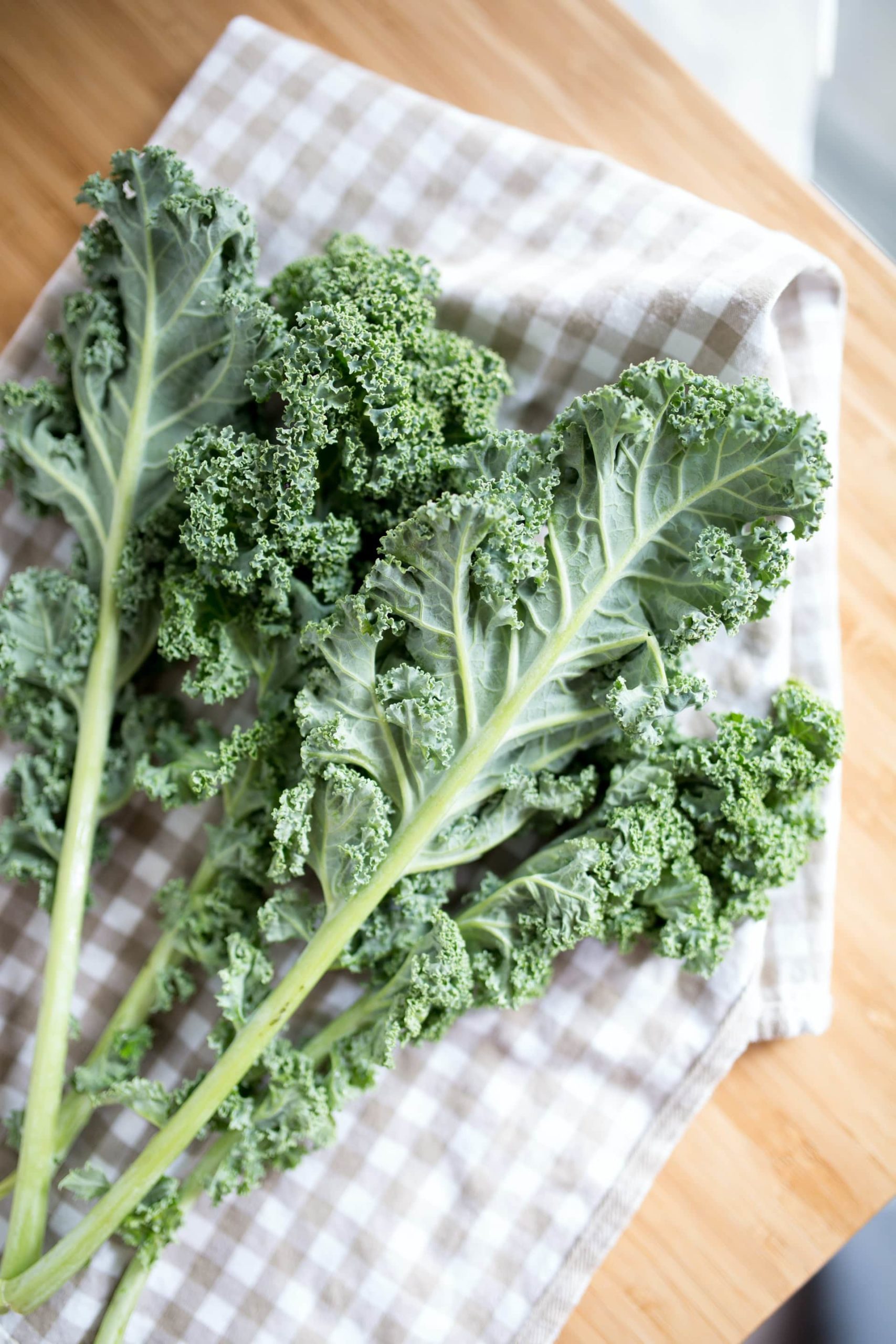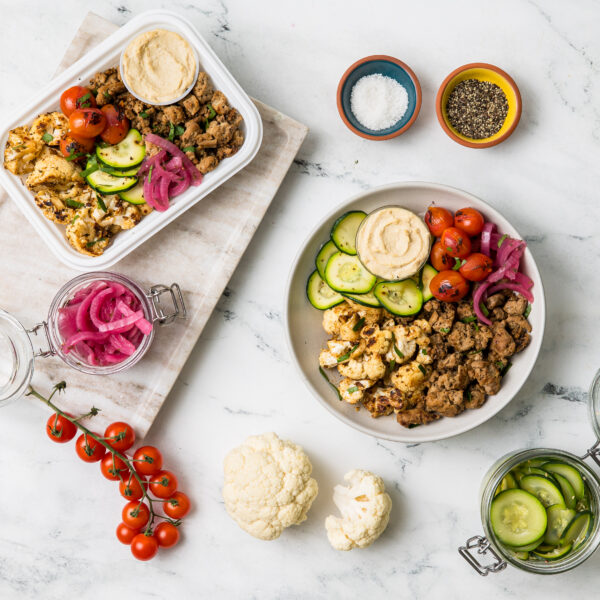In recent years, kale has seen a spike in popularity, and for a good reason. Some of us may have thought (or hoped) this was just a trend, but this superfood really does deserve all the hype. Kale can be bitter and hard to digest, but if prepared correctly, it is a great alternative to other leafy greens, given its heartiness and high nutritional value. Kale is the diet addition we all need but may not always know how to prepare. From smoothies to stews, there are many ways to work kale into your diet, since this popular veggie is extremely versatile.
Read on for more about this superpowered green from the Snap Kitchen team; we’ll have you saying “kale yeah!” in no time.
What is Kale?
While we often substitute kale for other leafy greens like lettuce or spinach, kale is actually an ancient member of the Brassica family. As a cruciferous vegetable, kale is related to cabbage, broccoli, cauliflower, cabbage, Brussels sprouts, and kohlrabi.
Health Benefits of Kale
Kale is often referred to as a superfood, but what does that really mean?
While the term is unregulated (similar to the word “natural”), superfoods are generally foods that have a very high nutritional density. It’s easy to see why kale gets put in the same category as avocados, olive oil, and blueberries – all widely considered ‘superfoods.’ Kale is rich in vitamins A, K, and C, iron, folate, calcium, antioxidants, manganese, calcium, copper, potassium, magnesium, and phosphorus.
Kale – a Closer Look
- Vitamin A is important for eye and bone health, as well as a robust immune system. One cup of kale contains 206% of your recommended daily allowance (RDA) of vitamin A.
- Vitamin K is known as the ‘coagulation’ vitamin because it is essential for blood clotting and bone building. Kale is one of the best food sources of Vitamin K, with a single cup containing almost 7x the RDA.
- Vitamin C is needed to form blood vessels, cartilage, muscle, and collagen. It is vital to our body’s healing processes and can help decrease signs and conditions of aging. Kale contains about 4.5x as much vitamin C as spinach.
- Iron is essential in the formation of hemoglobin and enzymes, transportation of oxygen to various parts of the body, and it also aids in cell growth, proper liver function, and more.
- Folate is a B vitamin key for brain development.
- Calcium is essential for building and maintaining strong bones.
- Antioxidants such as lutein, zeaxanthin, beta-carotene, vitamin C, flavonoids, and polyphenols help protect against various cancers by neutralizing up to 99% of free radicals in the body, preventing them from damaging our cells. Kale contains high levels of antioxidants but it’s important to note that antioxidants are heat-sensitive. It’s best to consume kale in raw or lightly cooked form to reap the full free-radical-fighting benefits.
Clearly, kale packs a big nutrition punch in a small package. Are you sold yet? Read on to learn more about the popular types of kale and uses for each.
Types of Kale
Curly Kale
Curly kale, with its bright green ruffled leaves, is one of the most common varieties out there. You can find it sold in the grocery store as loose leaves bound together or pre-rinsed and packaged. If you use this type of kale in a salad, be sure to remove the leaves from the stem and massage it after it’s rinsed to break down some of the toughness of the leaves. Massaging will also make the kale easier to digest, meaning your body will be better able to take advantage of all the benefits.
Lacinato Kale
Also called dinosaur or Tuscan kale, lacinato kale hails from Tuscany, Italy. The leaves of Lacinato kale are long, narrow, and darker green, and you’ll typically find them stacked up at the farmer’s market. These leaves are best used in soups and stews because of their grassy flavor and heartiness.
Ornamental Kale
This colorful variety is most commonly used in landscaping and as decoration in displays. Ranging in color from pinks and purples to deep magentas and greenish blues, ornamental kale forms a rosette pattern when mature. While ornamental kale is not typically consumed, this is not to say that it can’t be. Occasionally you may find it adding color and texture to salads or buffets as a garnish.
Red Russian Kale
Red Russian or Ragged Jack kale is best when consumed raw. The leaves of Red Russian kale are soft, and the stem is sweet, making this variety a great choice in salads.
Chinese Kale (Chinese Broccoli, Kailaan, Gai Lan)
Chinese kale, also known as Chinese broccoli, Kailaan, or Gai Lan, is more closely related to broccoli than curly leaf kale. Typically served steamed or stir-fried, Chinese kale can also be substituted for regular broccoli in most recipes.
Siberian Kale
Siberian kale, as the name suggests, is one of the most resilient and cold-hardy varieties. With the ability to withstand cooler temperatures and pests, Siberian kale is a great choice for any garden. The leaves grow wide and close to the ground and are considerably milder in taste than other types of kale, making it an excellent choice for salads.
Redbor Kale
Redbor kale, a cross between edible and ornamental, has tightly curled leaves. While the plant is often seen with reddish leaves and purple veins, the leaves turn a deep violet in cool temperatures, making it a beautiful addition to landscaping. While recipes do not frequently call for Redbor kale, this variety is edible. When raw, Redbor kale offers a mild cabbage-like flavor and, when cooked, turns tender and nutty.
Try Kale!
These hot summer nights call for quick and easy weeknight dinners packed with nutrition to keep you going. Add kale to your farmer’s market haul to incorporate into your weekly meals, or try one of our superfood salads like the Bacon Kale Tomato Salad or the Tuscan Kale Salad with Shrimp.





Leave a Reply
No Comments